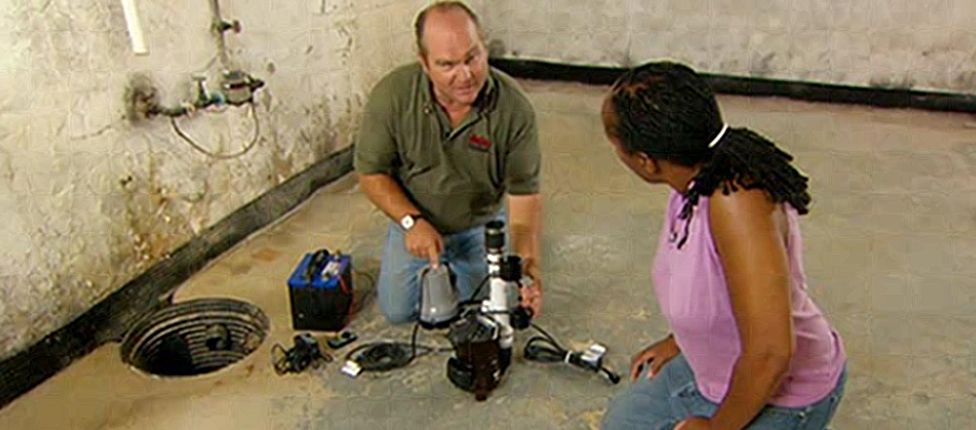Proven Solutions for Servicing a Sump Pump
Proven Solutions for Servicing a Sump Pump
Blog Article
Here down the page you'll find a lot of extremely good data regarding Cleaning & Maintenance Tips for Your Home's Sump Pump.

Sump pumps are important parts in several homes, especially in areas prone to flooding or excessive moisture. They help avoid water damage by efficiently removing excess water from basements or crawl spaces. However, like any other appliance, sump pumps call for normal upkeep to ensure they function effectively when required one of the most. Cleaning your sump pump is an important part of its maintenance, and recognizing exactly how to do it properly can conserve you from expensive repairs and possible catastrophes.
Intro
Preserving a tidy sump pump is crucial for its proper functioning and longevity. Neglecting this necessary task can bring about obstructions, breakdowns, and ultimately, water damage to your home. Therefore, learning how to clean a sump pump is critical for homeowners that depend on these devices to keep their cellars dry and protected.
Recognizing the Sump Pump
Prior to diving right into the cleaning procedure, it's essential to have a standard understanding of just how a sump pump functions. Commonly set up in a pit or basin below the basement flooring, a sump pump includes numerous crucial components, including a pump, a float switch, and a discharge pipe. When water builds up in the pit, the float switch turns on the pump, which after that pumps the water out with the discharge pipe, far from the building's structure.
Indications of a Dirty Sump Pump
Understanding when your sump pump requires cleaning is essential for preventing possible malfunctions. Some usual signs that show a dirty sump pump consist of strange noises throughout operation, minimized water flow, and visible particles in the pit. If you see any of these signs, it's essential to clean your sump pump immediately to stay clear of any additional problems.
Planning for Cleansing
Before you start cleaning your sump pump, it's vital to take some safety and security preventative measures. Begin by shutting down the power to the pump to prevent any type of electric crashes. Additionally, use ideal safety equipment, such as handwear covers and goggles, to protect on your own from dust, debris, and possible pathogens.
Step-by-step Overview to Cleansing a Sump Pump
Shutting Off the Power
Begin by disconnecting the power supply to the sump pump to stop any kind of crashes while cleaning.
Removing Particles and Dust
Utilize a pail or an inside story to get rid of any kind of visible debris, dirt, or debris from the sump pit. Dispose of the particles appropriately to avoid it from obstructing the pump or the discharge pipe.
Cleaning up the Pump and Drift Switch Over
When the pit is clear of debris, very carefully get rid of the pump from the pit. Examine the pump and the float switch for any type of indicators of damage or wear. Utilize a soft brush or cloth to cleanse the surface areas and eliminate any kind of gathered gunk.
Purging the System
After cleaning up the pump and float button, purge the sump pit with tidy water to eliminate any kind of continuing to be dirt or sediment. This will certainly aid make certain that the pump operates smoothly and effectively.
Looking For Appropriate Functioning
Prior to re-installing the pump, do a quick examination to make sure that the float switch activates the pump correctly. Put some water into the sump pit and observe the pump's procedure. If every little thing is operating correctly, you can reassemble the pump and reconnect the power supply.
Maintenance Tips to Keep Your Sump Pump Clean
In addition to regular cleaning, there are numerous maintenance ideas you can follow to keep your sump pump in optimum problem:
Conclusion
Cleansing your sump pump is an essential facet of its upkeep and guarantees that it operates properly when you need it one of the most. By following the steps laid out in this overview and including regular upkeep right into your regimen, you can expand the life-span of your sump pump and safeguard your home from water damage.
6 STEPS ON HOW TO CLEAN A SUMP PUMP PROPERLY
UNDERSTANDING SUMP PUMPS
Your sump pump plays a crucial role in protecting your home by managing and removing excess water. It primarily functions as a “shield”, guarding your basement against the damaging effects of water accumulation. The pump is housed in a sump pit in the lowest part of your basement, and its job is to pump out any water that collects there.
During heavy rainfalls or when snow melts rapidly, water can infiltrate your basement, posing potential risks like flooding, structural damage, and harmful mold growth. Here, the sump pump springs into action, pumping out the intruding water and directing it away from your home.
SAFETY FIRST
Before cleaning, remember to prioritize safety. Disconnect the sump pump from the power source to prevent any accidental electric shocks. Also, wear sturdy gloves to protect your hands from any sharp or dirty components within the pump.
REMOVE THE SUMP PUMP
After ensuring your safety, the next step is to remove the sump pump from its pit. Doing this might require careful maneuvering as you don’t want to damage any pump components. Once removed, clean the sump pit to remove any accumulated debris or sludge.
INSPECT THE PUMP
Inspect the pump for any visible signs of wear or damage. Check the power cord, float switch, and impeller housing. If any components look worn out or damaged, consider replacing them to ensure optimal performance.
CLEAN THE PUMP
Thoroughly clean the pump with warm, soapy water. Make sure to rid it of any dirt, gravel, or other debris that might impede its performance. You can use a toothbrush to clean the small, hard-to-reach parts of the pump.
REINSTALL THE SUMP PUMP
Reinstall the pump into the sump pit Make sure it’s positioned correctly to remove the water effectively Once it’s back in place, reconnect it to the power source TEST THE PUMP
Finally, pour some water into the pit to ensure the pump works correctly. It should start automatically and begin pumping out the water; if it doesn’t, check the power source and the positioning of the pump.
Remember, while cleaning your sump pump is an essential part of home maintenance, hiring a professional plumber for a thorough inspection and cleaning at least once a year is also important. This will ensure that your pump is in optimal condition, ready to protect your home from potential water damage.
BEST PRACTICES FOR CLEANING SUMP PUMP DISCHARGE PIPES
Regular Inspection: Regularly inspect your discharge pipes, especially during heavy rainfall or snowmelt periods. Look for any signs of blockage or damage. Early detection of problems can prevent serious issues down the line. Periodic Cleaning: Over time, sediment and debris can accumulate in the discharge pipes, impeding the flow of water. Regular cleaning helps keep the pipes clear and functioning efficiently. You can use a high-pressure water jet to effectively clean the pipes. Insulation During Winter: In colder climates, discharge pipes can freeze, blocking the outflow of water. Protect your discharge pipes from freezing temperatures by insulating them with foam pipe insulation. This will ensure the sump pump can continue to discharge water even in freezing conditions. Proper Positioning: The discharge pipe should be positioned to direct water away from your home’s foundation. Improper positioning can lead to water seeping back into the basement. Ensure the pipe is long enough and angled correctly. Installation of a Check Valve: A check valve prevents water from flowing back into your sump pit after the pump has pushed it out. Installing a check valve helps maintain the efficiency of your sump pump and reduces the risk of flooding. Minimize Pipe Turns: Every curve or turn in the discharge pipe can decrease the efficiency of water flow. By minimizing turns and bends in your discharge pipe, you can increase the efficiency of your sump pump. https://www.fullspeedplumbing.com/how-to-clean-a-sump-pump-properly9999/

I hope you enjoyed reading our piece about Cleaning & Maintenance Tips for Your Home's Sump Pump. Thanks a lot for taking the time to read through our article. Kindly set aside a second to distribute this page if you appreciated it. Many thanks for taking the time to read it.
Get Quote Now Report this page